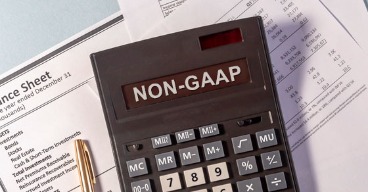Content
Eventually, someone is going to miscalculate the demand for a product or something will go wrong in a shipment — causing everything to arrive late. If we divide that number by the number of deliveries – we will calculate the average deviation. If we add that average deviation to the expected number of days to deliver, we now have a lead time that should be more realistic. Calculating safety stock is essential for determining the optimum amount of additional stock to have on hand for shortage prevention in the event current market demand changes. Although maintaining any amount of extra stock could theoretically protect a business from running out, there are many pitfalls to carrying too much stock, as well. The service level expresses the probability that a certain level of safety stock will not lead to stock-out.
However, it should help keep from running out of stock most of the time. That’s why it’s important to approach safety stock calculations through numbers instead of emotions and fear. Rely on data from your POS, market research, conversations with suppliers, and demand forecast to make the most informed safety stock call.
What safety stock formula should you use?
With ERP or inventory management software, you can access correct and relevant information online in a few clicks. These solutions list of features include real-time monitoring of your inventory, an alert system when you reach the minimum stock, detailed history to make inventory forecasts, etc. Consider the quality and volume of your data before selecting the best https://kelleysbookkeeping.com/ formula for your safety stock. A solid and trustworthy data collection to work from is essential since data is a crucial component in each of these computations. If not, your calculations can be off, creating more problems than they resolve. Before refilling your inventory, the service level specifies the predicted likelihood of avoiding an out-of-stock issue.

This is where safety stock can mitigate any unforeseen changes to the norm. Jon and his company, nowadays, have shown a great interest in becoming leaner and being competitive in the market. There certainly are different How To Calculate Safety Stock? Safety Stock Formula And Calculation areas within the company wherein improvement is necessary to make the entire chain lean, leveraging from its benefits. It is possible that some natural disasters prevented sellers from being able to deliver the product.
Products
In this article, we will be talking about Jon (definitely not the King of the North). He is a fictional character for better illustrative purposes and also a mushrooming retailer. He, for long, cherished the state of running OUT-OF-STOCK as a result of persistently good sales on various marketplaces. But he now is in a state of FOMO (fear of missing out) a good number of orders for the same reason. Do you remember the childhood days when we used to keep all our pocket money into piggy banks? With backorders, retailers can keep revenue flowing and keep customers happy since they can still follow through with their purchases.
- And if that customer tells other people about the mishap, it could have long-lasting effects on your reputation.
- We make an order when we reach the Reorder Point, and we receive the item when we reach the safety stock level.
- Just in Time inventory management would largely operate without a safety stock figure.
- Your safety stock and reorder point determine how low your stock can get before you need to order more.
- Daily usage is the amount of inventory that you sell or consume per day, while lead time is the time it takes to replenish your inventory from your supplier.
- A negative customer experience will make them shop elsewhere and are unlikely to return.
Not only do these low stock alerts optimize your purchasing workflows, but they help prevent stockouts at the same time. Because those products have to be disposed of and can no longer be sold (which also means producing a lot of extra waste). By utilizing safety stock, direct-to-consumer (DTC) brands can continue selling while they wait on replenishment. To find the difference between the expected lead time and the actual lead time to find the standard deviation. As a business owner, one of your biggest nightmares is missing out on sales because of stockouts. Not only does this cut into potential revenue, but it can also sever ties with loyal customers you’ve worked hard to build relationships with.
Product
In this way, safety stock allows the business to keep making sales and bringing in revenue while waiting on more inventory from their manufacturer, all without ever stocking out. With so many orders flooding in, the business quickly begins fulfilling orders using its regular inventory. When the stock hits its reorder point, the business places an order for another 5,000 units of the product.
It is critical that the inventory manager has a handle on safety stock as part of a holistic approach to stock control and sees safety stock as a tool with which to manage stock levels and costs. For most companies, particularly in e-commerce this reduction in service levels can end up being far more costly than keeping safety stock. The ultimate goal of the EOQ formula is to calculate the optimal number of product units to order at any given time. It is used to determine a company’s inventory reorder point such that when inventory falls to a calculated level, the system triggers the need to place an order for more units. Where sales are higher per stock item – maybe over 200 sales per month or more then assuming the lead times are relatively stable then ‘Normal Distribution with Uncertain Demand’ will be most effective. Essentially when you set your service level it will determine a safety factor which you can use as a safety stock which is uniform according to demand.


Share your feedback about this course